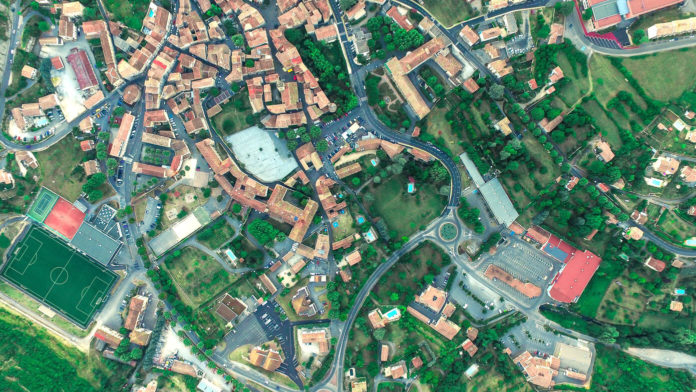We know that walkable neighbourhoods are good for our health. They promote a healthy lifestyle that includes more daily physical activity, greater access to healthy food options, and reduced social isolation. But beyond living in a short radius to local shops and resources, it’s vital to have pathways to get to them, and the way that our streets are designed locks in a backbone for our communities that lasts for a century or more.
That’s why it’s so worrying that the global trend is moving towards more disconnected streets.
Cul-de-sacs, dead-end streets, and gated communities are all part of the problem. Not only does the disconnected nature of street design impact human health and social interaction, it also has a direct negative impact on the environment; urban sprawl makes it harder to get places on foot, discourages efficient public transportation, and increases pollution from motorized vehicles.
By contrast, gridded streets provide more flexible routes and make it easier to walk, cycle, or take public transportation because more destinations can be reached in a given window of time.
To quantify the how city streets are evolving all over the world, researchers Christopher Barrington-Leigh (McGill University) and Adam Millard-Ball (University of California, Santa Cruz) created an index that measures sprawl as a function of the local connectivity of street networks. Their study was published in PNAS.
Using publicly available data from OpenStreetMap and satellite-derived data, the authors looked for trends over time since 1975. They found that streets in new developments in 90% of the 134 most populous countries have become less connected since then, and only a third show an improving trend since 2000.
“We wanted to take a systematic approach that identifies cities — which might not be household names beyond their country’s borders — where sprawl is rapidly worsening,” said Barrington-Leigh in a press release. “We also wanted to identify the cities that, often with little fanfare, have been working to grow in an efficient, connected pattern for decades.”
Their data pointed to southeast Asia as home to some of the most sprawling cities, and new developments are only adding to their disconnected street patterns. Going in the opposite direction, the development of new gridded networks was found in Bolivia, Argentina, and Peru. And while the roadways of Germany, Denmark, and the United Kingdom are less connected, these countries also maintain dedicated pedestrian and bike paths that provide connected options for non-motorized travel.
Government policies can have a big impact on future development. In 2000, the United Kingdom mandated that streets be permeable to foot and bicycle traffic, and China recently shifted its national policy from large city blocks to a finer network on streets.
To help visualize street networks, the authors also created an online interactive map that lets users explore the globe with colour-coded streets that quickly differentiate dead ends and streets that are the only means to enter or exit a development. Its tools can jump to examples of streets that are disconnected or circuitous, but it also shines a light on cities on a grid system. Advanced controls open up options to scroll through a timeline to see how street patterns evolved.
Streets should form connections, not put up barriers. Policies need to shift to ensure that new developments in our cities move towards grid systems or other alternatives that provide better connectivity. These are the changes that can make neighbourhoods great places to live, not just today but for years to come.








































